#Are How To Remove Chlorine From Skin After Swimming Pool
Explore tagged Tumblr posts
Text
I wanna make a book recommendation to Steven Universe fans, and more specifically, fans of Pearl.

Pearls: A Natural History
By Neil H. Landman, Paula M. Mikkelsen, Rudiger Bieler, and Bennet Bronson.
ISBN 0810944952
There's a ton of interesting info about how pearls are formed, how they're gathered, and their impact on human history and culture.


But of special interest is this section, which a headcannon gold mine:
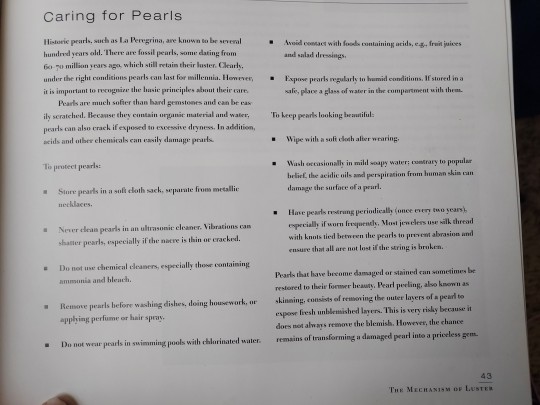
In case you can't read it, it says:
Caring for Pearls
Historic pearls, such as La Peregrina, are known to be several hundred years old. There are fossil pearls, some dating from 60-70 million years ago, which still retain their luster. Clearly, under the right conditions pearls can last for millennia. However, it is important to recognize the basic principles about their care.
Pearls are much softer than hard gemstones and can be easily scratched. Because they contain organic material and water, pearls can also crack if exposed to excessive dryness. In addition, acids and other chemicals can easily damage pearls
To protect pearls:
Store pearls in a soft cloth sack, separate from metallic necklaces.
Never clean pearls in an ultrasonic cleaner. Vibrations can shatter pearls, especially if the nacre is thin or cracked.
Do not use chemical cleaners, especially those containing ammonia and bleach.
Remove pearls before washing dishes, doing housework, or applying perfume or hair spray.
Do not wear pearls in swimming pools with chlorinated water.
Avoid contact with foods containing acids, e.g., fruit juices and salad dressings.
Expose pearls regularly to humid conditions. If stored in a safe, place a glass of water in the compartment with them.
To keep pearls looking beautiful:
Wipe with a soft cloth after wearing.
Wash occasionally in mild soapy water; contrary to popular belief, the acidic oils and perspiration from human skin can damage the surface of a pearl.
Have pearls restrung periodically (once every two years), especially if worn frequently. Most jewelers use silk thread with knots tied between the pearls to prevent abrasion and ensure that all are not lost if the string is broken.
Pearls that have become damaged or stained can sometimes be restored to their former beauty. Pearl peeling, also known as skinning, consists of removing the outer layers of a pearl to expose fresh unblemished layers. This is very risky because it does not always remove the blemish. However, the chance remains of transforming a damaged pearl into a priceless gem.
45 notes
·
View notes
Text
How to take care of your hair after Keratin Treatment
Introduction
You’ve just invested time and money in a keratin treatment, and you’re eager to flaunt your newfound, silky smooth hair. But hold your horses! The secret to long-lasting, luscious locks lies in proper aftercare. Let's dive into the world of post-keratin hair care, busting myths and providing expert tips to keep your hair looking its absolute best.
Understanding Keratin Treatments
Before we dive into aftercare, let's quickly recap what a keratin treatment actually does. Keratin is a protein naturally found in your hair, but over time, external factors like heat styling, pollution, and chemical treatments can deplete it. A keratin treatment replenishes this protein, smoothing the hair cuticle and reducing frizz.
Essential Wait Time for Keratin Hair
One of the most critical aspects of keratin treatment aftercare is the waiting period. This typically lasts 2-3 days, during which you should avoid:Water: This includes washing, swimming, or even getting caught in the rain. Heat styling: Say goodbye to your beloved curling iron and straightener for a few days. Hair ties or clips: These can create creases in your hair.
Washing Your Hair Post-Keratin
Once the waiting period is over, it's time to introduce your hair to its new washing routine.Sulfate-free shampoo: Sulfates can strip the keratin from your hair, so opt for sulfate-free options. Cold water: Washing your hair with cold water helps to seal the cuticle and preserve the keratin treatment. Gentle washing: Avoid scrubbing your scalp vigorously. Instead, focus on massaging the shampoo into your hair.
Deep Conditioning
While keratin treatments add a protective layer, your hair still needs deep conditioning. Look for products specifically formulated for keratin-treated hair. These will help maintain moisture balance and prevent dryness.
Heat Styling
Heat styling can gradually break down the keratin treatment, so it's essential to use it sparingly. When you do style, always apply a heat protectant.
Smart Hair Tie and Accessory Picks
Opt for gentle hair ties like scrunchies or silk bands to avoid creating creases. Avoid metal hair clips as they can snag your hair.
Protect Your Hair While Swimming
Chlorine and saltwater can damage your keratin treatment. If you're planning a swim, wet your hair with clean water before entering the pool or ocean. This will help minimize the absorption of harmful chemicals.
Protect Your Hair from the Sun
Just like your skin, your hair needs protection from the sun's harmful rays. Use hair products with SPF or wear a hat when spending extended periods outdoors.
Keep Hair Healthy with Regular Trims
Regular trims are essential for removing split ends and preventing breakage. This will help your hair look its best and maintain the benefits of the keratin treatment.
Professional Touch-Ups
To prolong the effects of your keratin treatment, consider getting professional touch-ups every 2-3 months.
Common Keratin Treatment Myths Debunked
Myth: Keratin treatments damage your hair. Fact: When done by a professional with high-quality products, keratin treatments can actually improve hair health by sealing the cuticle. Myth: You can't curl or style your hair after a keratin treatment. Fact: While it's best to avoid heat styling immediately after the treatment, you can curl or style your hair once it's fully dry. Myth: Keratin treatments are only for straight hair. Fact: Keratin treatments can be used on all hair types, from straight to curly.
FAQ
What is keratin treatment? A keratin treatment is a hair smoothing process that involves applying a keratin-based solution to the hair. Keratin is a natural protein found in hair, and the treatment aims to replenish and strengthen the hair's structure.
How long does a keratin treatment last? The results can last anywhere from 3 to 5 months, depending on hair type and aftercare.
Can I color my hair after a keratin treatment? It's best to wait a few weeks before coloring your hair to allow the keratin to fully bond.
Is keratin treatment safe for pregnant women? While some keratin treatments contain formaldehyde, there are formaldehyde-free options available. It's best to consult with your doctor before undergoing the treatment.
Is keratin treatment good for hair? Keratin treatment can be beneficial for many hair types, especially those prone to frizz or damage. It can smooth the hair cuticle, reduce frizz, and add shine. However, it's essential to choose a reputable salon and opt for formaldehyde-free products to minimize potential risks.
Does keratin treatment straighten hair? While keratin treatments can significantly reduce frizz and create a smoother appearance, they don't necessarily result in completely straight hair. The degree of straightening depends on your hair's natural texture and the specific keratin treatment used. Some treatments offer more straightening power than others.
Conclusion
Investing in a keratin treatment is a fantastic way to achieve smoother, healthier hair. By following these aftercare tips, you can extend the life of your treatment and enjoy beautiful hair for months to come. Remember, consistency is key! For more information on our hair care products, visit our products page.

3 notes
·
View notes
Text
Keratin Hair Straightening Treatment in Perth: Everything You Need to Know
Hair straightening treatments have gained immense popularity in recent years, with keratin treatments standing out as one of the most effective solutions for smooth, frizz-free hair. If you are in Perth and looking for a reliable way to transform your hair, a keratin hair straightening treatment is an excellent choice. This article will explore everything you need to know about keratin hair straightening treatment in Perth, including its benefits, procedure, cost, aftercare, and where to find the best salons.

What is Keratin Hair Straightening Treatment?
Keratin hair straightening is a semi-permanent hair treatment that helps to smooth and straighten frizzy, wavy, or curly hair. The process involves infusing the hair with keratin, a natural protein found in hair, nails, and skin. This treatment works by coating the hair shaft with keratin, filling in any gaps or damage, and sealing it with heat to lock in the smoothness and shine.
Benefits of Keratin Hair Straightening Treatment
Opting for a keratin hair treatment in Perth comes with several advantages:
Eliminates Frizz – One of the primary benefits is the reduction of frizz, making hair more manageable.
Smooth and Silky Hair – The treatment leaves hair soft, smooth, and shiny.
Reduces Styling Time – Hair becomes easier to style, requiring minimal effort.
Enhances Hair Health – Keratin fills in porous hair, making it stronger and healthier.
Long-Lasting Results – The effects can last between 3 to 6 months, depending on hair type and aftercare.
Suitable for All Hair Types – Whether you have curly, wavy, or frizzy hair, keratin treatment can work wonders.
How Does Keratin Hair Straightening Work?
The keratin hair straightening process involves multiple steps to ensure long-lasting results. What to prepare for during the course of treatment is as listed below:
1. Consultation
Before undergoing the treatment, a professional stylist will assess your hair type, texture, and condition. They will discuss the expected results and recommend the best keratin formula for your needs.
2. Hair Cleansing
Your hair will be washed with a clarifying shampoo to remove any build up, ensuring that the keratin formula penetrates effectively.
3. Application of Keratin Solution
The stylist will apply the keratin solution evenly throughout the hair, ensuring each strand is coated for maximum effectiveness.
4. Heat Activation
After the keratin treatment is applied, a blow dryer and flat iron are used to seal the keratin into the hair. This step helps to lock in the smoothness and shine.
5. Final Rinse and Styling
Depending on the formula used, some treatments may require a final rinse before styling. Once completed, your hair will be noticeably smoother and more manageable.
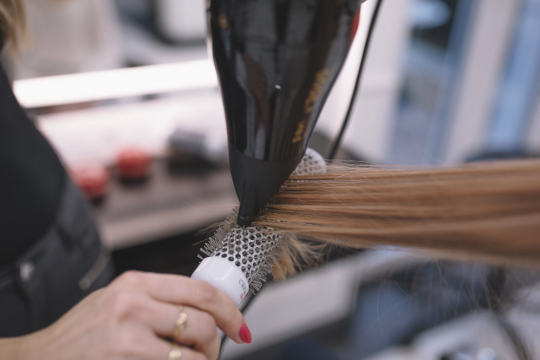
Aftercare Tips for Long-Lasting Results
To extend the life of your keratin hair straightening treatment in Perth, follow these essential aftercare tips:
Avoid Washing Hair for 72 Hours – Let the keratin fully set before washing your hair.
Use Sulfate-Free Shampoo – Harsh chemicals can strip the keratin treatment faster.
Minimize Heat Styling – Reduce the use of curling irons and straighteners to maintain results.
Protect Hair from Chlorine and Saltwater – Swimming in pools or the ocean can degrade the treatment.
Schedule Regular Touch-Ups – Visit your salon for maintenance treatments to keep your hair looking its best.
Cost of Keratin Hair Straightening in Perth
The cost of keratin hair straightening treatment varies depending on several factors, including hair length, salon reputation, and the type of keratin formula used. On average, the price ranges between $200 to $500 per session. Some high-end salons may charge more due to premium products and experienced stylists.
Best Salons for Keratin Hair Straightening in Perth
Finding a reputable salon is crucial for achieving the best results. Here are some top-rated salons in Perth known for their keratin hair straightening treatments:
Salon Express – Offers professional keratin treatments at competitive prices.
House of Ernest – A luxury salon with expert stylists specializing in hair smoothing treatments.
Circles of Subject – Well-known for high-quality hair straightening services in Perth.
Tao of Hair – Uses advanced keratin formulas for long-lasting results.
Hair Affair Perth – Provides customized keratin treatments based on hair type and needs.

Frequently Asked Questions
Is Keratin Hair Straightening Safe?
Yes, when performed by a professional, keratin hair straightening is safe. However, ensure that the salon uses formaldehyde-free formulas to avoid potential health risks.
Can I Color My Hair After a Keratin Treatment?
It is recommended to wait at least two weeks before coloring your hair to allow the keratin to settle properly.
Will My Hair Be Completely Straight?
Keratin treatments smooth and reduce frizz but do not necessarily make hair pin-straight. The results depend on your hair’s natural texture.
How Often Should I Get a Keratin Treatment?
To maintain the best results, repeat the treatment every 3 to 6 months based on your hair type and growth.
Does Keratin Treatment Work on Curly Hair?
Yes, keratin treatments work well on curly hair, making curls softer and more manageable. However, results vary based on curl tightness.
Conclusion
If you’re looking for a keratin hair straightening treatment in Perth, you now have all the information you need to make an informed decision. This treatment is a fantastic solution for anyone wanting smooth, frizz-free, and manageable hair. By choosing a reputable salon, following proper aftercare, and maintaining your hair with sulfate-free products, you can enjoy beautiful, long-lasting results. Book an appointment with a trusted salon in Perth today and transform your hair with the power of keratin!
#hairtransformation#keratintreatment#healthyhair#hairsmoothening#nanoplasty#frizzfreehair#hair smoothing treatment#haircare#shinyhair#haircaretips
0 notes
Text
Tips for Safe Swimming Pool Practices

Swimming is a fun and refreshing activity enjoyed by people of all ages. However, it is essential to follow safety measures to prevent accidents and ensure a safe and enjoyable experience. Whether you are a beginner or an experienced swimmer, adhering to safety guidelines is crucial. If you are considering taking swimming classes in Indore or looking for a well-maintained swimming pool in Indore, here are some essential safety tips to keep in mind.
1. Always Supervise Children
Children should never be left unattended near a swimming pool. Adult supervision is necessary at all times to prevent accidents. Even if a child knows how to swim, unexpected situations like cramps or fatigue can arise, leading to dangerous situations.
2. Learn to Swim from Professionals
If you are not confident about your swimming skills, it is highly recommended to enroll in professional swimming classes in Indore. Qualified instructors can teach proper swimming techniques and safety measures, reducing the risk of drowning or injuries.
3. Use Safety Equipment
For beginners and children, using appropriate safety gear like life jackets, arm floaties, or kickboards can help build confidence while swimming. However, these should not be considered substitutes for supervision and proper swimming skills.
4. Check Water Depth Before Diving
Before diving into a pool, always check the water depth. Diving into shallow water can result in severe head or neck injuries. Most pools have designated deep areas for diving, so always use those sections and avoid diving in unfamiliar waters.
5. Follow Pool Rules and Guidelines
Every swimming pool in Indore has specific rules and regulations for safety. These may include restrictions on running around the pool, diving in certain areas, and prohibiting rough play. Following these guidelines ensures the safety of all swimmers.
6. Avoid Swimming Alone
It is always safer to swim with a buddy, especially in unfamiliar or large pools. In case of an emergency, having someone nearby can make a significant difference in getting immediate assistance.
7. Be Aware of Pool Drains and Filters
Pool drains and suction outlets can pose risks, especially for children. Avoid playing near these areas to prevent getting trapped. Many pools have anti-entrapment covers, but it is still advisable to stay cautious.
8. Take Breaks and Stay Hydrated
Swimming can be physically exhausting, leading to dehydration and fatigue. Take regular breaks, drink water, and avoid prolonged exposure to the sun to prevent heat-related illnesses.
9. Know Basic First Aid and CPR
In case of an emergency, knowing basic first aid and CPR (Cardiopulmonary Resuscitation) can be lifesaving. If you are a frequent swimmer or a parent, consider taking a CPR course to be prepared for emergencies.
10. Shower Before and After Swimming
Maintaining hygiene is essential when using public pools. Showering before entering the pool helps keep the water clean, while showering afterward removes chlorine and other pool chemicals from your skin.
11. Avoid Swimming Under the Influence
Swimming under the influence of alcohol or drugs is extremely dangerous. These substances impair judgment, coordination, and reaction time, increasing the risk of accidents and drowning.
12. Ensure Proper Pool Maintenance
If you own a swimming pool, regular maintenance is crucial. Keep the water clean, check the chemical balance, and ensure that safety equipment is in good condition. If you visit a swimming pool in Indore, choose one that follows proper hygiene and maintenance protocols.
13. Be Cautious of Weather Conditions
Avoid swimming during thunderstorms or extreme weather conditions. Lightning can be a serious hazard near water bodies, and strong winds can create unsafe swimming conditions.
Following these safety practices ensures a secure and enjoyable swimming experience. If you are looking to improve your swimming skills, enrolling in swimming classes is a great option. Additionally, choosing a well-maintained swimming pool enhances safety and comfort while swimming. Prioritizing safety not only protects you but also ensures a pleasant experience for everyone around the pool.
#marriage garden in indore#indore wedding venues#wedding venue in indore#garden in indore for marriage#swimming pool in indore
0 notes
Text
Hair care solution
1. Understand Your Hair Type
Your hair type dictates your care routine. Hair can be:
Oily: Scalp produces excess oil; hair feels greasy.
Dry: Scalp lacks oil; hair appears dull or brittle.
Normal: Balanced moisture and oil levels.
Combination: Oily roots and dry ends.
How to Determine:
After washing,(https://e-commerceexpressindia.store/) check how your scalp feels by the end of the day.
Use products specifically designed for your hair type.
2. Cleansing: Shampooing the Right Way
Frequency: Avoid over-washing as it strips natural oils. Wash 2-3 times a week unless you sweat heavily or have an oily scalp.
Technique:
Wet hair thoroughly.
Use a small amount of shampoo, focusing on the scalp.
Gently massage with fingertips (not nails) to boost circulation.
Avoid Hot Water: It dries out the scalp. Use lukewarm water and finish with cold water to seal cuticles.
3. Conditioning for Moisture and Shine
How to Use:
Apply conditioner only on the mid-lengths to ends of your hair (not the scalp).
Leave for 2-3 minutes before rinsing.
Deep Conditioning:
Use a deep conditioner or mask weekly to repair damage and restore hydration.
4. Pre-Wash Hair Oiling
Why Oil?
Oils nourish the scalp, promote growth, and prevent dryness.
Best Oils for Hair:
Coconut Oil: Deeply penetrates hair shafts.
Argan Oil: Adds shine and reduces frizz.
Castor Oil: Promotes hair growth.
Almond Oil: Strengthens hair.
How to Apply:
Warm the oil slightly.
Massage into the scalp for 5-10 minutes.
Leave it on for at least 1 hour or overnight.
5. Avoiding Damage: Heat, Styling, and Chemicals
Minimize Heat Tools: Blow-dry, straighten, and curl sparingly.
Use Heat Protectants: Always apply before heat styling.
Chemical Treatments: Avoid frequent coloring, bleaching, or perming. Use ammonia-free dyes and herbal henna as alternatives.
6. Protecting Hair from Environmental Damage
Sun Protection: Wear hats or use hair sunscreen sprays.
Pollution: Cover your hair with a scarf in polluted areas.
Swimming: Wet hair before entering the pool to reduce chlorine absorption, and rinse hair immediately after.
7. Diet and Hydration for Healthy Hair
Key Nutrients:
Biotin: Found in eggs, nuts, and bananas for growth.
Omega-3: Found in fish, walnuts, and flaxseeds for hydration.
Proteins: Strengthen hair; include chicken, tofu, and dairy.
Iron and Zinc: Prevent hair fall; include spinach, beans, and lentils.
Stay Hydrated: Drink at least 8-10 glasses of water daily.
8. Special Hair Treatments
DIY Hair Masks:
For Dry Hair: Blend banana, honey, and coconut oil.
For Oily Hair: Mix yogurt, lemon juice, and aloe vera.
For Damage Repair: Use avocado, olive oil, and honey.
Protein Treatments: Strengthen weak strands with keratin-enriched masks.
9. Trimming and Maintenance
Frequency: Trim hair every 6-8 weeks to prevent split ends.
Combing: Use a wide-tooth comb to detangle. Start from the ends and work upwards.
10. Scalp Care: The Foundation of Healthy Hair
Exfoliate: Use a gentle scalp scrub once a month to remove dead skin cells and buildup.
Massage Regularly: Stimulates blood flow and enhances hair growth.
Anti-Dandruff Care:
Use shampoos with zinc pyrithione or ketoconazole.
Natural remedy: Massage with tea tree oil mixed with a carrier oil.
11. Night-Time Hair Care
Silk Pillowcases: Reduces friction, preventing breakage and frizz.
Protective Hairstyles: Opt for loose braids or buns to avoid tangling.
Overnight Masks: Apply nourishing treatments overnight for extra hydration.
12. Signs You Need Extra Attention
Hair Loss: Excessive shedding may indicate stress, nutritional deficiencies, or hormonal imbalances.
Breakage: Look into strengthening treatments or consult a dermatologist.
Scalp Issues: Persistent itching or dandruff may require medicated products.
By combining these practices, you can maintain strong, healthy, and shiny hair. Would you like guidance on specific concerns like dandruff, hair fall, or frizz control?
0 notes
Text
Pool Cleaning Abu Dhabi: Tips to Keep Your Pool Crystal Clear
Having a swimming pool in Abu Dhabi is a luxury that comes with a lot of perks—cool dips during scorching summers, a relaxing spot for family gatherings, or even a picturesque backdrop for your home. But let’s face it: keeping your pool water crystal clear and safe isn’t as effortless as it looks. Regular maintenance is key, and for those who want the ultimate hassle-free experience, relying on the best pool cleaning Abu Dhabi services can make all the difference.
If you prefer to handle the cleaning yourself or want to understand how professionals achieve sparkling results, here are some essential tips to maintain a pristine pool.
1. Skim and Remove Debris Daily
One of the simplest ways to keep your pool clean is by skimming the surface every day. Falling leaves, insects, and dust can quickly accumulate, especially in Abu Dhabi’s windy and sandy environment. Letting debris sit too long can clog your filters or sink to the bottom, making it harder to clean later.
A quick five-minute skim with a net can prevent major cleaning headaches. However, if you’re dealing with constant debris or don’t have the time, hiring the best pool cleaning Abu Dhabi professionals ensures that this task is handled for you regularly.
2. Brush and Vacuum the Pool
Even if the water looks clear, dirt and grime can cling to your pool walls, floor, and steps. Over time, this buildup can lead to stains and algae growth. Brushing the walls and vacuuming the bottom at least once a week can help prevent this.
For large pools or pools with stubborn algae, the best pool cleaning Abu Dhabi services use advanced tools like robotic pool vacuums and specialized brushes to ensure no spot is missed. They’ll leave your pool looking flawless with minimal effort on your part.
3. Maintain Proper Chemical Levels
Chemical balance is critical for keeping your pool water clear and safe for swimming. Too much chlorine can irritate your skin and eyes, while too little can allow bacteria and algae to thrive. The key is to regularly test and adjust your pool’s pH, chlorine, and alkalinity levels.
The ideal pH level should range between 7.2 and 7.8. You can use test kits available in stores or, better yet, rely on the best pool cleaning Abu Dhabi experts to handle the balancing act for you. Professionals can also provide advanced water testing to spot any hidden chemical imbalances.
4. Keep Your Filters Clean
Your pool’s filtration system works tirelessly to remove dirt and particles from the water. But when the filters become clogged, they can’t do their job properly. Make sure to clean the filter basket weekly and backwash the system as needed to maintain optimal performance.
If you’re unsure about filter maintenance, many of the best pool cleaning Abu Dhabi companies offer specialized filter cleaning as part of their routine services. This keeps your system running efficiently and prevents costly repairs down the line.
5. Shock Your Pool When Needed
Even with regular maintenance, there are times when your pool water may look dull or cloudy, especially after heavy use or a sandstorm. Shocking the pool—adding a concentrated dose of chlorine—can eliminate contaminants and restore water clarity.
You don’t need to shock your pool every week, but doing so once a month or after a big gathering can make a huge difference. If you’re not confident about how to do this, let the best pool cleaning Abu Dhabi specialists handle it for you. They’ll know exactly when and how to perform this treatment.
0 notes
Text
How to protect costume jewelry?
Costume jewelry is an essential element of fashion that allows individuals to express their style without spending a fortune. However, it requires proper care to maintain its beauty and durability. If you're wondering how to protect costume jewelry, you’re not alone! In this guide, we will explore effective methods to ensure your costume jewelry remains stunning and long-lasting.
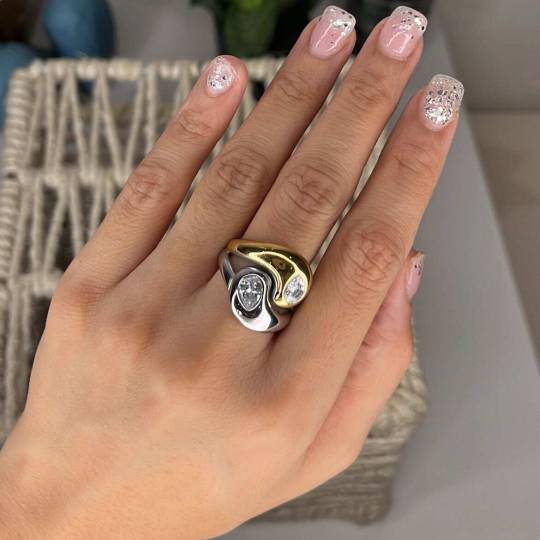
At Jewellery Hat, India’s fastest-growing fashion jewelry brand, we offer a wide range of earrings, necklaces, bracelets, and rings. All our pieces are made from stainless steel, feature anti-tarnish properties, and come with a lifetime replacement warranty on polishing. This commitment to quality means our jewelry is designed to withstand the rigors of daily wear while maintaining its shine. Let’s dive into the ways you can protect your beloved costume jewelry!
Understanding Costume Jewelry
Before we discuss how to protect costume jewelry, it’s important to understand what it is. Costume jewelry is typically made from less expensive materials, such as base metals, glass, and synthetic stones. While it offers a fabulous way to accessorize, it is often more susceptible to wear and tear compared to fine jewelry. This means taking the right steps to protect your pieces is crucial.
Why Protecting Costume Jewelry is Important
Many people wonder, "Why should I protect my costume jewelry?" Here are some compelling reasons:
Preserving Appearance: Regular wear and exposure can lead to tarnishing and fading. Protecting your costume jewelry helps maintain its original luster.
Increasing Longevity: Proper care and protection can significantly extend the life of your jewelry, allowing you to enjoy it for years to come.
Preventing Allergic Reactions: Some costume jewelry may contain nickel or other allergens. Protecting your jewelry helps minimize the risk of skin irritations.
Saving Money: By taking good care of your jewelry, you reduce the need for frequent replacements, saving you money over time.
How to Protect Costume Jewelry
Now that we understand the importance of protecting costume jewelry, let’s explore various methods to keep your pieces in excellent condition.
1. Remove Jewelry Before Activities
One of the most straightforward ways to protect costume jewelry is to remove it before engaging in activities that could cause damage. Consider these scenarios:
Exercise: Sweat can lead to tarnishing and discoloration. Always remove your jewelry before working out.
Showering: Water exposure can weaken adhesives and cause metals to tarnish. Make it a habit to take off your jewelry before bathing.
Swimming: Chlorinated water can be particularly damaging. Always leave your jewelry behind when heading to the pool.
By making a habit of removing your jewelry during these activities, you significantly reduce the risk of damage.

2. Store Jewelry Properly
Proper storage is essential for protecting costume jewelry. Here are some tips to ensure your pieces remain safe:
Use a Jewelry Box: Invest in a quality jewelry box with compartments to keep your items separated. This prevents scratches and tangling.
Avoid Humid Areas: Store your jewelry in a dry place away from humidity. Bathrooms can often be too humid, leading to tarnishing.
Individual Pouches: For added protection, store individual pieces in soft pouches. This minimizes the risk of scratching and tangling.
3. Clean Regularly
Regular cleaning is crucial for maintaining the appearance of your costume jewelry. Here’s how to effectively clean your pieces:
Use a Soft Cloth: After each wear, wipe your jewelry with a soft, lint-free cloth to remove dirt, oils, and moisture.
Gentle Cleaners: If deeper cleaning is needed, use a mild soap and water solution. Avoid harsh chemicals, which can damage the finish.
Dry Thoroughly: Always ensure your pieces are completely dry before storing them. This helps prevent moisture-related issues like tarnishing and odors.
At Jewellery Hat, our stainless steel pieces are designed for easy maintenance, allowing you to keep your jewelry looking its best with minimal effort.
4. Avoid Exposure to Chemicals
Chemicals can cause significant damage to costume jewelry. Here are common substances to avoid:
Perfume and Hair Products: These products can lead to discoloration. Apply perfume or hair products before putting on your jewelry.
Household Cleaners: Be cautious when cleaning your home. Strong chemicals can harm your jewelry. Always remove your pieces before cleaning.
Swimming Pools and Spas: Chlorine in pools can tarnish metals. Make it a rule to remove your jewelry before entering any pool or spa.
Being mindful of these chemicals helps protect your costume jewelry.
5. Choose Quality Over Quantity
When shopping for costume jewelry, consider investing in higher-quality pieces. Here’s why this matters:
Durability: High-quality costume jewelry, like those from Jewellery Hat, is designed to withstand regular wear.
Aesthetic Appeal: Well-made jewelry often looks more appealing and can mimic the appearance of fine jewelry.
Longevity: Investing in quality means your pieces are likely to last longer, reducing the need for frequent replacements.
By selecting higher-quality items, you’ll protect your costume jewelry and enjoy the benefits of durability and style.
6. Limit Exposure to Moisture
Water can damage costume jewelry, especially those made from base metals or with glued components. To protect your pieces:
Avoid Water Exposure: As mentioned earlier, always remove your jewelry before showering, swimming, or exercising.
Dry Immediately: If your jewelry accidentally gets wet, dry it immediately with a soft cloth to prevent moisture damage.
Choosing stainless steel jewelry from Jewellery Hat means you’ll have pieces that are more resistant to moisture, but it’s still best to avoid excessive exposure.
7. Use a Jewelry Protectant
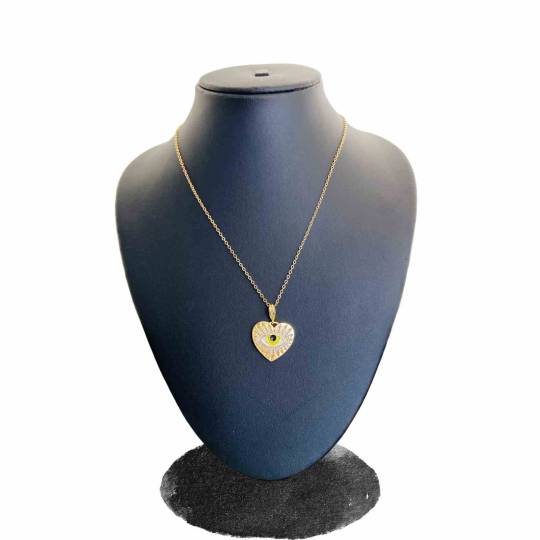
Consider using a jewelry protectant spray designed to create a barrier over your pieces. This helps shield against tarnishing and wear. Here’s how to apply it:
Clean First: Ensure your jewelry is clean and dry before application.
Follow Instructions: Each product will have specific instructions, so follow these carefully for optimal results.
Using a protectant can enhance the longevity of your jewelry, giving you added peace of mind.
8. Handle with Care
How you handle your costume jewelry can significantly impact its lifespan. Here are some tips for careful handling:
Avoid Tugging: Be gentle when putting on or taking off your jewelry to prevent bending or breaking components.
Keep Away from Pets: If you have pets, be mindful of your jewelry. Animals can be curious and may accidentally damage your pieces.
Avoid Excessive Force: Don’t pull or stretch your jewelry. This can cause clasps to break or chains to snap.
Being mindful of how you handle your jewelry can go a long way in protecting its integrity.
9. Inspect Regularly
Regularly inspecting your costume jewelry allows you to catch any issues before they escalate. Here’s what to look for:
Loose Stones: Check for any loose stones or embellishments. If you notice any, consider taking your jewelry to a professional for repair.
Signs of Tarnishing: Look for discoloration or tarnishing. If you find any, clean your jewelry promptly to restore its appearance.
Worn-Out Components: Check for signs of wear on clasps, chains, or other components. Addressing these issues early can prevent more significant damage later.
At Jewellery Hat, our lifetime replacement warranty on polishing ensures you can keep your jewelry looking its best.
10. Know When to Seek Professional Help
If you encounter significant issues with your costume jewelry, don’t hesitate to seek professional help. Here are some situations where you should consult a jeweler:
Repairs: If your jewelry needs repairs, a professional can fix loose stones or damaged clasps effectively.
Cleaning: For deep cleaning or restoration, consider taking your jewelry to a professional cleaner who specializes in costume jewelry.
Appraisal: If you have valuable costume jewelry and want to know its worth, a professional appraisal can provide valuable insight.
Conclusion
Protecting your costume jewelry is essential for maintaining its beauty and extending its lifespan. By following the tips outlined in this guide, you can ensure your pieces remain vibrant and stylish for years to come.
At Jewellery Hat, we are committed to offering high-quality costume jewelry designed to withstand everyday wear while looking stunning. Our stainless steel pieces are anti-tarnish and come with a lifetime replacement warranty on polishing, providing you peace of mind with your purchase.
Explore our collection today and discover the perfect pieces that reflect your unique style while standing the test of time. Remember, with the right care and protection, your costume jewelry can continue to shine brightly in your wardrobe!
Contact Us :-
Do follow us and tag us if you happen to buy from us :-
Instagram - https://www.instagram.com/jewelleryhatofficial/
Facebook - https://www.facebook.com/jewelleryhatofficial
Contact Us - https://www.jewelleryhat.com/pages/contact-us
WhatsApp - 7017675567
0 notes
Text
Signs It’s Time to Drain Your Pool: Don’t Ignore These Red Flags
Most pools need to be drained every 3-5 years to maintain water quality. Neglecting this can lead to various problems that affect your pool’s lifespan and your enjoyment. Draining your pool at the right time is essential for effective pool cleaning services henderson. Below are some key signs that indicate it’s time to drain your pool.
1. Persistent Algae Growth
If you notice that algae keeps returning despite regular cleaning and chemical treatments, it's a sign that the pool water needs to be replaced. Algae can become resistant to chemicals over time, making it harder to eliminate. Draining and refilling the pool can give you a fresh start, allowing you to control algae growth more effectively. Regular swimming pool weekly service helps keep algae at bay, but sometimes a complete water change is necessary.
2. Difficulty Maintaining Chemical Balance
When your pool's water chemistry becomes difficult to maintain, it's a strong indication that draining may be necessary. Over time, the water in your pool can accumulate minerals and chemicals that make it challenging to keep a balanced pH, chlorine, and alkalinity level. This can lead to cloudy water, skin irritation, and even damage to pool equipment. If you're constantly adding chemicals without success, it's time to consider a swimming pool draining service.
3. High Total Dissolved Solids (TDS)
Total Dissolved Solids (TDS) refers to the total concentration of dissolved substances in the pool water, including minerals, chemicals, and debris. When TDS levels get too high, it can make the water hard, affecting the effectiveness of chemicals and the comfort of swimmers. High TDS levels often cause the water to taste salty or feel gritty. If you suspect high TDS levels, draining and refilling your pool is the best solution.
4. Water Stains on Pool Walls
Stains on the pool walls, especially those that don’t go away with scrubbing, are a clear sign that the water may need to be replaced. These stains are usually caused by metals, minerals, or algae buildup over time. Draining the pool and cleaning the surfaces can help remove these unsightly marks and prevent further staining. Regular swimming pool care near you can help prevent stains, but when they persist, draining is often necessary.
5. Unpleasant Odor
If your pool water has an unpleasant smell, it might be caused by a buildup of organic materials such as sweat, oils, and debris from the environment. These materials can overwhelm the pool’s filtration system and lead to a foul odor. When this happens, it's often a sign that the water is no longer clean and fresh. A swimming pool draining service can help eliminate the odor by giving you fresh, clean water.
6. The Pool Hasn’t Been Drained in Years
Even if your pool looks clear and seems fine, if it hasn’t been drained in more than three years, it’s time to do so. Water quality deteriorates over time, no matter how well you maintain it. Regular swimming pool weekly service can keep your pool in good shape, but nothing replaces the benefits of a complete water change after a few years.
Don’t Wait—Schedule Your Pool Draining Today!
Ignoring the signs that your pool needs to be drained can lead to costly repairs and health risks. Regular maintenance, including timely draining, is crucial for keeping your pool safe and enjoyable. If you've noticed any of these signs, it's time to schedule a pool drain services with a professional.
Taking action now will help keep your pool in excellent condition, ensuring a safe and enjoyable environment for everyone.
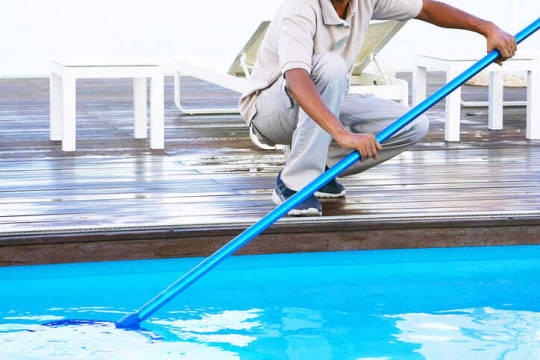
1 note
·
View note
Link
0 notes
Text
Seasonal Hair Care Tips: How to Keep Your Hair Healthy Year-Round
At Paddie Hair & More, we believe that beautiful hair is all about adapting to the seasons. Just like you switch up your wardrobe as the weather changes, your hair care routine should also evolve. Here’s a simple guide to help you keep your hair looking fabulous no matter what the weather brings!

Spring: Refresh and Renew
1. Boost Hydration
Spring’s arrival means more humidity, which can be a welcome change after a dry winter. Refresh your hair with a hydrating shampoo and conditioner. Look for products with moisturizing ingredients like aloe vera or coconut oil.
2. Give Your Scalp Some TLC
Spring can also bring oily scalp issues. To combat this, use a gentle scalp scrub or clarifying shampoo once a week. This will help remove any buildup and keep your scalp feeling fresh.
3. Time for a Trim
Spring is a great time for a fresh start! Schedule a trim to get rid of split ends and encourage healthy growth. Even a small trim can make a big difference.
Summer: Protect and Preserve
1. Shield from the Sun
Summer sun can be tough on your hair, just like it is on your skin. Use a UV protectant spray to shield your hair from harmful rays. And don’t forget to wear a hat or scarf when you’re out for long periods.
2. Rinse After Swimming
Whether you’re hitting the pool or the beach, chlorine and saltwater can strip your hair of its natural oils. Rinse your hair with fresh water before and after swimming. For a deeper clean, use a clarifying shampoo once a week.
3. Keep It Moisturized
The summer heat can dry out your hair. Use a deep conditioning treatment once a week to keep your locks hydrated and shiny.
Fall: Repair and Rejuvenate
1. Repair Damage
After summer’s sun and salt, your hair might need some extra care. Treat your hair to a nourishing mask or leave-in conditioner to restore moisture and strength.
2. Adjust Your Routine
As the weather cools down, your hair might need extra hydration. Switch to a richer conditioner or add a leave-in product to your routine to keep your hair feeling soft and smooth.
3. Pamper Your Scalp
With cooler temperatures, your scalp might get dry. Try a moisturizing scalp treatment or massage some coconut oil into your scalp to keep it healthy and hydrated.
Winter: Nourish and Protect
1. Combat Dryness
Winter’s cold air and indoor heating can dry out your hair. Use a moisturizing shampoo and conditioner to keep your hair hydrated. Adding a weekly deep conditioning treatment can also help.
2. Reduce Heat Styling
Heat styling tools can make your hair even drier in winter. Try to cut back on blow-drying and straightening. If you do use heat, always apply a heat protectant spray first.
3. Cover Up
Protect your hair from winter’s harsh elements by wearing a hat or scarf. Opt for a silk or satin scarf to reduce friction and prevent breakage.

General Tips for Every Season
Eat Well: A balanced diet with lots of fruits, vegetables, and proteins supports healthy hair growth all year.
Stay Hydrated: Drink plenty of water to keep your hair and scalp hydrated.
Be Gentle: Avoid over-washing and use a wide-toothed comb to detangle your hair. Minimize the use of harsh chemicals and heat treatments.
Conclusion
In conclusion, maintaining healthy hair throughout the changing seasons requires a tailored approach that addresses the unique challenges each season presents. From protecting your locks against winter dryness to shielding them from summer sun and humidity, adopting specific hair care routines can make a significant difference. Remember to adjust your products, treatments, and practices as the weather changes to keep your hair nourished and vibrant all year long. By being proactive about your hair care, you can foster resilience and shine regardless of external conditions. So, embrace these seasonal tips and give your hair the care it deserves!
At Paddie Hair & More (Best Unisex Salon in Mumbai), we’re here to help you with all your hair care needs. Come visit us and let us help you achieve your best hair yet!
Best Unisex Salon in Mumbai
Paddie Hair and More | Your Go-To Unisex Salon in Mumbai Experience the best professional haircuts, coloring, & treatments tailored just for you at Paddie Hair & More, a leading unisex salon in Mumbai. Visit us Now!
1 note
·
View note
Text
Pool Maintenance Tips for a Sparkling Home
Maintaining a pool can be both rewarding and challenging. Whether you're an experienced pool owner or a first-time pool buyer, keeping your pool in tip-top condition is essential to creating an inviting and enjoyable outdoor space. In this comprehensive guide, we'll explore practical pool maintenance tips from a variety of perspectives, ensuring your pool remains crystal-clear and ready for a refreshing dip residential pool plans.
1. Regular skimming and cleaning:
- Why it's important: Cleaning the pool surface daily removes leaves, debris and insects. Regular cleaning prevents filter clogging and ensures optimal water circulation.
- How to do it: Invest in a quality skimmer net and remove floating debris. Brush the pool walls and floor to prevent algae buildup. Vacuum the pool weekly to maintain water clarity.
- Example: Imagine hosting a poolside barbecue and your guests are greeted by a sparkling pool devoid of leaves or twigs. It sets the tone for a lovely gathering.
2. Water chemistry balance:
- Why it's important: Proper water chemistry ensures swimmer comfort, prevents algae growth and extends the life of pool equipment.
- How to do it: Periodically test the water's pH, alkalinity and chlorine levels. Adjust as needed using pool chemicals. Aim for a pH range of 7.4 to 7.6.
- Example: When water is perfectly balanced, swimmers will not experience eye or skin irritation. Plus, your pool equipment will thank you because it will last longer.
3. Filter maintenance:
- Why it's important: Filters remove impurities and keep your water clear. Neglecting filter maintenance can lead to cloudy water and reduced circulation.
- How to do it: Clean or wash your filter regularly (frequency depends on the type of filter). Replace filter cartridges as recommended by the manufacturer.
- Example: Imagine a serene morning swim with sunlight filtering through crystal-clear water. A well-maintained filter makes this possible.
4. Inspect and repair pool equipment:
- Why it matters: Faulty equipment can disrupt pool performance and increase maintenance costs.
- How to do it: Check pumps, heaters and timers for leaks or unusual noises. Lubricate moving parts and tighten loose connections. Schedule professional inspections annually.
- Example: A well-functioning pool pump ensures efficient water circulation, which translates into lower energy bills and a happier pool owner.
5. Cover your pool when not in use:
- Why it's important: Pool covers prevent debris buildup, reduce evaporation and maintain water temperature.
- How to do it: Invest in a durable pool cover that fits snugly. Use it during off-peak swimming hours or when the pool is not in use for an extended period.
- Example: Imagine discovering your pool after a week of absence and finding it still spotless, a testament to your diligent use of the cover.
6. Address algae promptly:
- Why it matters: Algae can turn a crystal-clear pool into a murky mess. Prevention is key.
- How to do it: Shock the pool with chlorine if you notice signs of algae growth. Brush the affected areas and run the filter continuously until the water clears.
- Example: By cutting algae off at the root, you maintain a pool that looks attractive rather than intimidating.
Remember, consistent pool maintenance not only enhances your property's curb appeal but also ensures a safe and enjoyable swimming experience . Whether you're selling your home or just want to create an oasis in your backyard, these tips will keep your pool sparkling all year long. ️
I've provided an entire section on "Pool Maintenance Tips for a Sparkling Home" as part of the blog. The content covers various aspects of pool care, from skimming and water chemistry to equipment maintenance and algae prevention. Let me know if you'd like any more details or tweaks!
0 notes
Text
Guide for Choosing the Best Bikini and Swimwear for Summer Occasion

With summer just around the corner, it's time to start thinking about the best bikini and swimwear for your beach days, pool parties, and tropical getaways. But with so many options available, finding the perfect swimwear can feel like a daunting task. The key is to focus on what suits your body type, personal style, and the activities you’ll be enjoying. Here’s a comprehensive guide to help you pick the best bikini and swimwear for every occasion.
What to Look for in the Best Bikini and Swimwear
Selecting the best bikini and swimwear requires a balance of style, comfort, and functionality. Here are some essential factors to consider:
Fit and Flatter: The best bikini and swimwear should complement your body shape. Whether you have an hourglass figure, a pear shape, or an athletic build, there’s a perfect swimsuit out there for you. High-waisted bottoms, halter tops, and one-piece suits with strategic cutouts can enhance your natural curves.
Comfort is Key: Comfort is non-negotiable when it comes to swimwear. Look for pieces that offer adjustable straps, soft lining, and materials that feel good against your skin. The best bikini and swimwear should make you feel confident and comfortable, whether you’re lounging or swimming.
Durability: High-quality swimwear is made to last. The best bikini and swimwear are constructed from durable fabrics like nylon, spandex, or polyester blends that can withstand sun, salt, and chlorine without fading or losing shape.
Matching the Best Bikini and Swimwear to Your Activities
Different activities call for different types of swimwear. Here’s how to choose the best bikini and swimwear for various occasions:
Beach Lounging: If your goal is to relax and soak up the sun, consider stylish yet comfortable options. Bandeau tops, triangle bikinis, and cheeky bottoms are great choices for minimal tan lines and maximum style.
Active Swimming: For swimming or water sports, opt for swimwear that offers more support and stays in place. Racerback styles, one-piece suits, and bikinis with secure straps are ideal for these activities.
Pool Parties: When attending a pool party, the best bikini and swimwear should be as fashionable as it is functional. Consider bold prints, trendy cutouts, and matching cover-ups to make a statement.
Tips for Finding the Perfect Fit
Finding the best bikini and swimwear is all about the fit. Here are some tips to ensure your swimwear fits like a glove:
Know Your Measurements: Before shopping, take accurate measurements of your bust, waist, and hips. This will help you find the right size and avoid ill-fitting pieces.
Try Before You Buy: If possible, try on swimwear before purchasing. Move around, sit, and stretch to ensure it stays in place and feels comfortable.
Adjustable Features: Swimwear with adjustable straps, ties, or removable padding can offer a more customized fit, making it easier to find the best bikini and swimwear for your body.
Caring for Your Best Bikini and Swimwear
Proper care extends the life of your swimwear. To keep the best bikini and swimwear in top condition:
Rinse Immediately: After wearing, rinse your swimwear with cold water to remove chlorine, salt, and other residues.
Gentle Washing: Hand wash your swimwear with mild detergent to protect the fabric and colors.
Dry Flat: Avoid wringing out your swimwear. Instead, lay it flat to dry, away from direct sunlight, to prevent fading and stretching.
Conclusion
Finding the best bikini and swimwear doesn’t have to be complicated. By focusing on fit, comfort, and the specific activities you’ll be engaging in, you can choose swimwear that meets all your needs. Whether you’re lounging by the pool, diving into the waves, or attending a summer party, the best bikini and swimwear will help you look and feel your best. With the right care, your swimwear will stay vibrant and stylish for seasons to come.
0 notes
Text
5 Of The Most Common Swimming Pool Maintenance Mistakes - PoolWareHouse uk

One key advantage of having your own swimming pool is being able to help keep up your fitness routine without any need to travel to a public or commercial pool.
It would hardly make sense, then, if you failed to keep your pool water clean and properly disinfected — as otherwise, swimming in it could pose major risks to your health.
Here are a few mistakes that you might be making with your swimming pool maintenance efforts.
Neglecting regular skimming
Especially if your swimming pool is outdoors, dirt and debris could too easily collect on top of the water’s surface and be left floating there long before it is removed.
You might be wondering: “Wouldn’t my pool’s filter get rid of it all anyway?” Well, that is one possibility. However, if you don’t make a daily habit of skimming the pool surface to clear away the likes of leaves and insects, they could clog up the filter and hinder its effectiveness.
Not keeping the filter sufficiently clean
Your pool’s filter should have originally come with manufacturer guidelines on how to clean the filter, a task you ought to be carrying out regularly.
We have already acknowledged the importance of doing what you can to manually remove debris from your pool water. Nonetheless, some debris that makes it to the filter could still end up trapped there — potentially until you remove it by actively cleaning the filter.
Overusing chlorine
Chlorine is just one example of a chemical that you can use to sanitise your pool to the required standard for preserving swimmers’ hygiene. You shouldn’t, though, assume that there would be “no harm” in adding more chlorine than what the manufacturer recommends.
When it comes to responsible pool maintenance, dedicated swimming pool chemicals will always be crucial. However, the overuse of such chemicals can lead to irritated eyes and skin, in addition to accelerating the corrosion of pool fixtures and equipment.
Overlooking the need for regular shock treatments
Simply adding chlorine to a pool isn’t enough to keep it hygienic. That is because you will also need to regularly apply what are known as “shock treatments”. Fortunately, here at Pool Warehouse, we offer chlorine shock for this purpose. But what would you be risking if you failed to “shock” your pool?
Since shock treatment is about helping to break down such contaminants as chloramines, bacteria, and organic matter, not going through with it — especially just after the pool has been used heavily or exposed to extreme weather — could result in cloudy water where algae fester.
Leaving the pool uncovered when it isn’t in use
What if you have an outdoor pool? In that case, leaving it constantly uncovered — and thus exposed to the elements — is likely to lead to debris accumulating heavily in it. This would leave you with a tougher cleaning job when you do eventually start preparing to swim in the pool again.
Fortunately, we sell not only swimming pool chemicals and cleaning equipment, but also solar covers. You can buy one in a standard or bespoke size to suit your specific pool’s dimensions.
Do you have any further questions about what the Pool Warehouse store has to offer, and which could be instrumental in the maintenance of your pool? If so, please don’t hesitate to reach out to us by phone or email.
0 notes
Text
How to Get Healthier Hair – and keep it that way!
........GET A FREE HEALTHY HAIR GUID.......
Step 1: Wash your hair less often
Shampooing your hair removes dirt and oils, but over-shampooing can strip natural oils from your hair and scalp. Plus, shampoo that isn’t rinsed out fully can build-up on your hair, leaving it looking dull and lifeless.
Washing your hair a few times per week can help maintain oil balance for most hair types. Use our Batiste™ Dry Shampoos between washes to absorb excess oils and refresh your hair.
Also, try our Batiste™ Naturally Dry Shampoo line with 100% natural, plant-powered extracts and propellant for great results in a recyclable can that uses 40% less packaging when compared to Batiste Original.
Step 2: Apply conditioner properly
Conditioner is best applied to the middle and ends of your hair, then worked backward toward your scalp. Your hair needs the hydration further from the scalp, but your scalp can get dry, too. Pay extra attention to hydrating your scalp if it’s itchy or you notice flakes.
And make sure you choose the right conditioner for your hair type: thick curls need a different kind of hydrating than straight or thin hair.
Step 3: Use a hair mask weekly or as needed
Hair masks are deep moisturizing treatments that penetrate into the hair shaft to hydrate and strengthen from within. To help keep your hair supple, shiny, and strong, make a hair mask part of your healthy hair care routine at least weekly. To learn more about hair masks and how Batiste™ Leave-In Masks are different, check out our guide.
Step 4: Protect hair when heat styling
Try to reduce how often you get a blow out or use a hot iron on your hair and apply a moisturizing protectant before using heat. Batiste™ Leave-In Masks can help protect hair against heat up to 450 degrees – – rub some on your strands before blowdrying or ironing your hair.
Step 5: Minimize hair processing such as dyes, perms, relaxer
It’s fun to change up your hair color and style, and once you start bleaching, dying or processing, you have to maintain the look. Let your hair rest between processing treatments and give it extra love to allow it to rehydrate and recuperate after you’ve given it a chemical workout. Is your bleached hair damaged and in need of some love? Treat it to a hair mask to repair and strengthen.
Step 6: Protect hair when going in the sun or swimming
When indulging in some fun in the sun, help keep hair healthier by applying conditioner or a leave-in mask before swimming in any type of water (but especially chlorinated pools). If you’re a regular swimmer, wear a swim cap when you can to minimize your hair’s exposure to chlorine, and it’s always a good idea to wear a hat when out in the sun to help protect your hair and skin.
Step 7: Detangle hair before shower and shampoo
Brush or finger comb your hair to remove tangles before you wash it. Taking the few moments to detangle before jumping in the shower after a workout or in the morning will save you time and help prevent breakage.
Step 8: Brush your hair when dry vs. wet
When your hair is wet, it becomes more vulnerable to breakage. If you want to prevent flyaways, split ends and damage, avoid brushing wet hair. The best time to brush your hair is when it is almost or completely dry. This may vary by hair texture, as those with curly hair can potentially create more damage with dry brushing. If you really can’t resist brushing your hair when wet, use a wide tooth comb instead of a hairbrush. Tooth combs can be more gentle to the scalp and hair follicles, if you comb slowly.
Step 9: Squeeze wet hair with a towel, don’t rub
Wrap the towel around your head or long strands and blot to absorb water. Rubbing your hair with a towel introduces tangles and creates breakage.
Step 10: Protect and moisturize your scalp
Your scalp can get quite dry, especially if the air is dry, you over-shampoo, or it’s exposed to the sun. Wear hats and scalp sunscreen when going out in the sun, run a humidifier in your home if your indoor air is dry, shampoo less often and use a moisturizing shampoo. Use a deep scalp treatment as needed to hydrate your scalp if it’s gotten dry and flaky.
Step 11: Care for your hair while you sleep
Pull long hair back into a loose braid or put hair up into a sleep cap. Also try changing out your cotton or microfiber pillowcase for a silk or silk-alternative one. The smoother fabric can help prevent or reduce tangling while you sleep.
Step 12: Get regular haircuts
Trim your hair every 3 to 7 weeks if it’s short or bobbed, every 8-12 weeks for textured curly hair, and at least every 12 weeks for long hair to remove damaged or split ends and keep the shape of your hair style. Regular trims are a must for keeping your hair healthy, no matter your hair type.

Step 13: Eat a healthy diet and drink plenty of water
Eat a diet rich in protein, essential fatty acids, and B-vitamins to help give your body the nutrients it needs to produce keratin, the structural protein in your hair and nails. Drink plenty of water to help keep skin and hair hydrated as well.
........GET A FREE HEALTHY HAIR GUID.......
0 notes
Text
How to Fix Dry Skin in the Summer
How to Fix Dry Skin in the Summer
Introduction:
Summer is synonymous with warmth, sunshine, and outdoor activities. However, it can also be a challenging time for those of ‘’How to Fix Dry Skin in the Summer ‘’us grappling with dry skin. Contrary to popular belief, dry skin is not just a winter woe; the summer sun, chlorine from pools, and air conditioning can strip our skin of its natural oils, leading to dryness, flakiness, and discomfort. The Feel Good Moments brings you a comprehensive guide on combating dry skin during the summer months, ensuring your skin remains hydrated, healthy, and radiant.
Understanding Dry Skin in Summer:
Dry skin in summer can result from several factors, including prolonged exposure to the sun, which damages the skin barrier, excessive swimming in chlorinated water, and the dehydrating effect of air conditioning. Understanding these causes is the first step in crafting an effective skincare routine.
Hydration From Within:
Hydration starts from within. Drinking adequate water is crucial during the hot summer months. Nutrition also plays a significant role in skin health. Incorporating foods high in antioxidants, omega-3 fatty acids, and vitamins can help nourish skin from the inside out.
Gentle Cleansing:
Opt for a gentle, hydrating cleanser that removes impurities without stripping the skin of its natural oils. Avoid harsh soaps and face washes that can exacerbate dryness.
Moisturizing Strategies:
Invest in a quality moisturizer suitable for dry skin. Look for ingredients like hyaluronic acid, which can hold up to 1000 times its weight in water, and glycerin, which draws moisture to the skin. Applying moisturizer to damp skin can help lock in hydration.
Sun Protection:
Sunscreen is non-negotiable. UV rays can damage the skin, leading to moisture loss and premature aging. Apply a broad-spectrum SPF of 30 or higher every day, even when it's cloudy.
After-Sun Care:
If you spend a lot of time outdoors, incorporate an after-sun product into your routine. Aloe vera and hyaluronic acid can soothe and rehydrate sun-exposed skin.
Exfoliation:
Gentle exfoliation can remove dead skin cells, allowing moisturizers to penetrate more effectively.The Feel Good Moments’ However, over-exfoliation can damage the skin barrier, so limit this step to once or twice a week.
Humidifiers:
Consider using a humidifier in your home to add moisture to the air, which can help prevent your skin from becoming too dry.
Protective Clothing:
Wearing protective clothing and hats can shield your skin from harmful UV rays and prevent moisture loss.
Seek Professional Help:
If your dry skin persists or worsens, it may be time to seek advice from a dermatologist who can recommend a tailored treatment plan.
Conclusion:
Summer doesn't have to be a season of skin woes. With the right approach, you can enjoy all the fun it has to offer without sacrificing the health and beauty of your skin. By understanding the unique challenges of summer and adopting a holistic approach to skincare, you can keep dry skin at bay and maintain a healthy, hydrated glow all season long.
0 notes
Text
What Are The Most Common Reasons For Hair Loss in Summer?
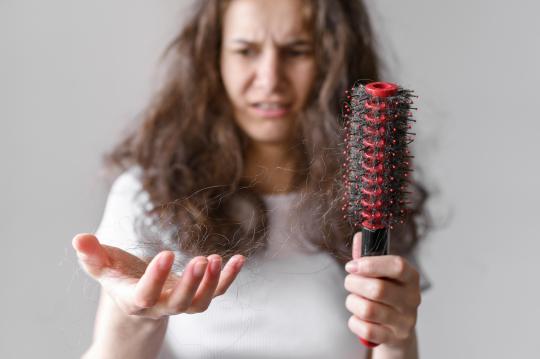
Introduction:
As the temperatures rise and the sun beats down, many of us find ourselves facing a common concern: hair loss. While we often associate hair shedding with the colder months, the summer season can also take a toll on our locks. At Sparsh Skin Clinic in Ahmedabad, we understand the unique challenges that summer can pose for hair health. In this blog, we'll explore some of the most common reasons for hair loss during the summer months and offer expert insights on how to combat this seasonal challenge.
Increased Sun Exposure:
Ahmedabad's scorching summer sun can wreak havoc on our hair, leading to increased dryness and brittleness. Prolonged exposure to UV rays can damage the hair cuticle, making strands more prone to breakage and shedding. To protect your hair from the sun's harmful effects, consider wearing a wide-brimmed hat or using a UV-protective hair spray when outdoors.
Excessive Sweating:
The hot and humid climate in Ahmedabad during the summer months can lead to excessive sweating, especially on the scalp. Sweat can mix with sebum and dirt, clogging hair follicles and potentially inhibiting healthy hair growth. Regular shampooing with a gentle, sulfate-free cleanser can help remove sweat and impurities, keeping the scalp clean and promoting optimal hair health.
Chlorine and Saltwater Exposure:
For many Ahmedabad residents, summer means spending time in pools or at the beach. While swimming can be a refreshing way to beat the heat, exposure to chlorinated or saltwater can strip the hair of its natural oils, leading to dryness and breakage. To minimize damage, rinse your hair with fresh water before and after swimming and consider using a leave-in conditioner to provide added moisture and protection.
Air Conditioning:
While air conditioning provides relief from the heat, it can also contribute to hair loss by drying out the air and stripping moisture from the hair and scalp. To combat the drying effects of AC, try using a humidifier to add moisture to the air or investing in a hydrating hair mask to replenish lost moisture.
Stress and Lifestyle Factors:
Summer festivities and travel plans can sometimes lead to increased stress levels, which can, in turn, contribute to hair loss. Additionally, changes in diet, sleep patterns, and routine during the summer months can also impact hair health. Prioritizing self-care practices such as regular exercise, adequate sleep, and a balanced diet rich in vitamins and minerals can help mitigate the effects of stress on hair health.
Conclusion:
At Sparsh Skin Clinic in Ahmedabad, we understand the unique challenges that summer can pose for hair health. By taking proactive steps to protect and nourish your hair, you can minimize the risk of summer-related hair loss and enjoy healthy, vibrant locks all season long. If you're experiencing persistent hair loss or concerns about your hair health, don't hesitate to reach out to Sparsh Skin Clinic of expert trichologist for personalized guidance and treatment options. Let's embrace the summer season with confidence and beautiful, resilient hair!
0 notes